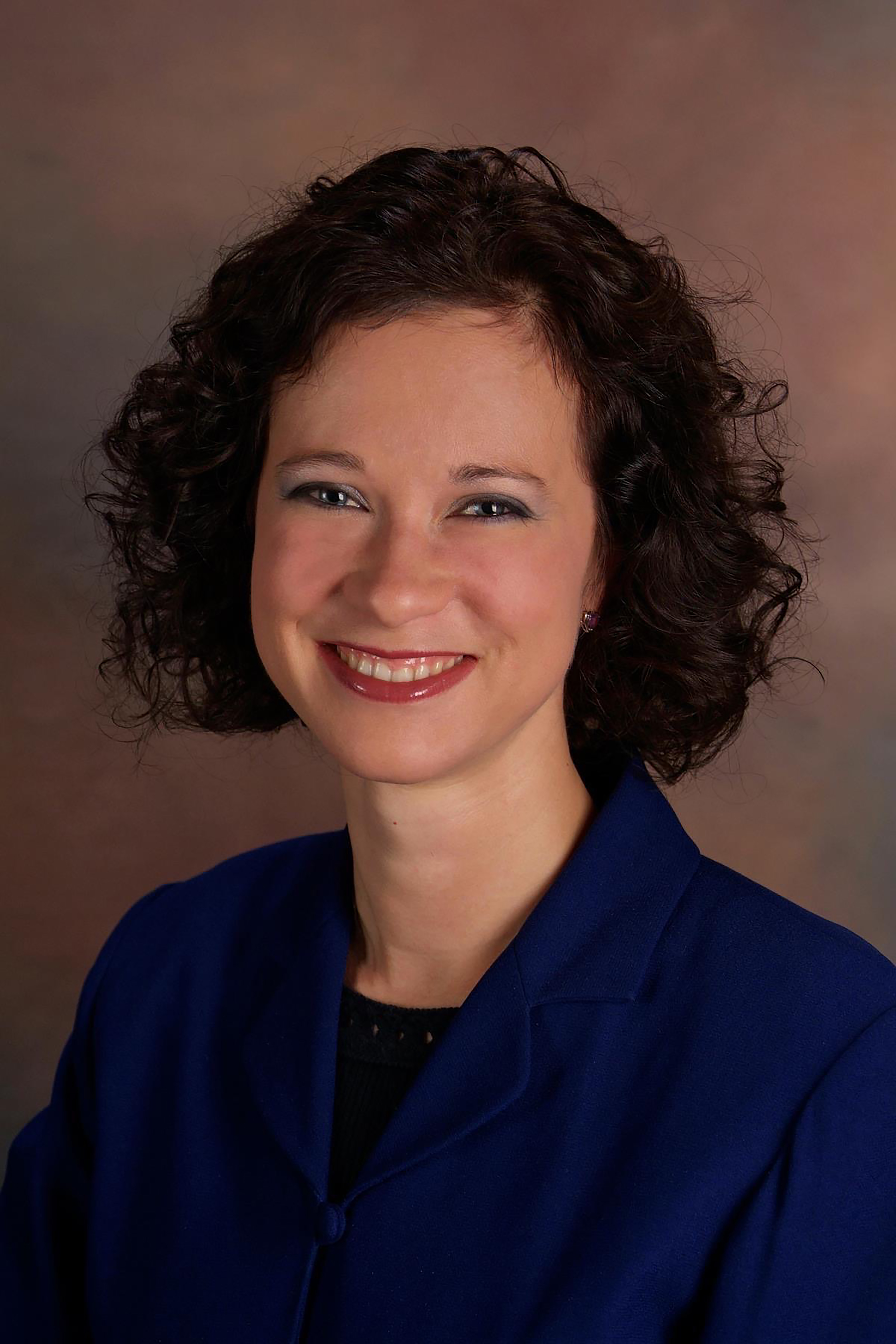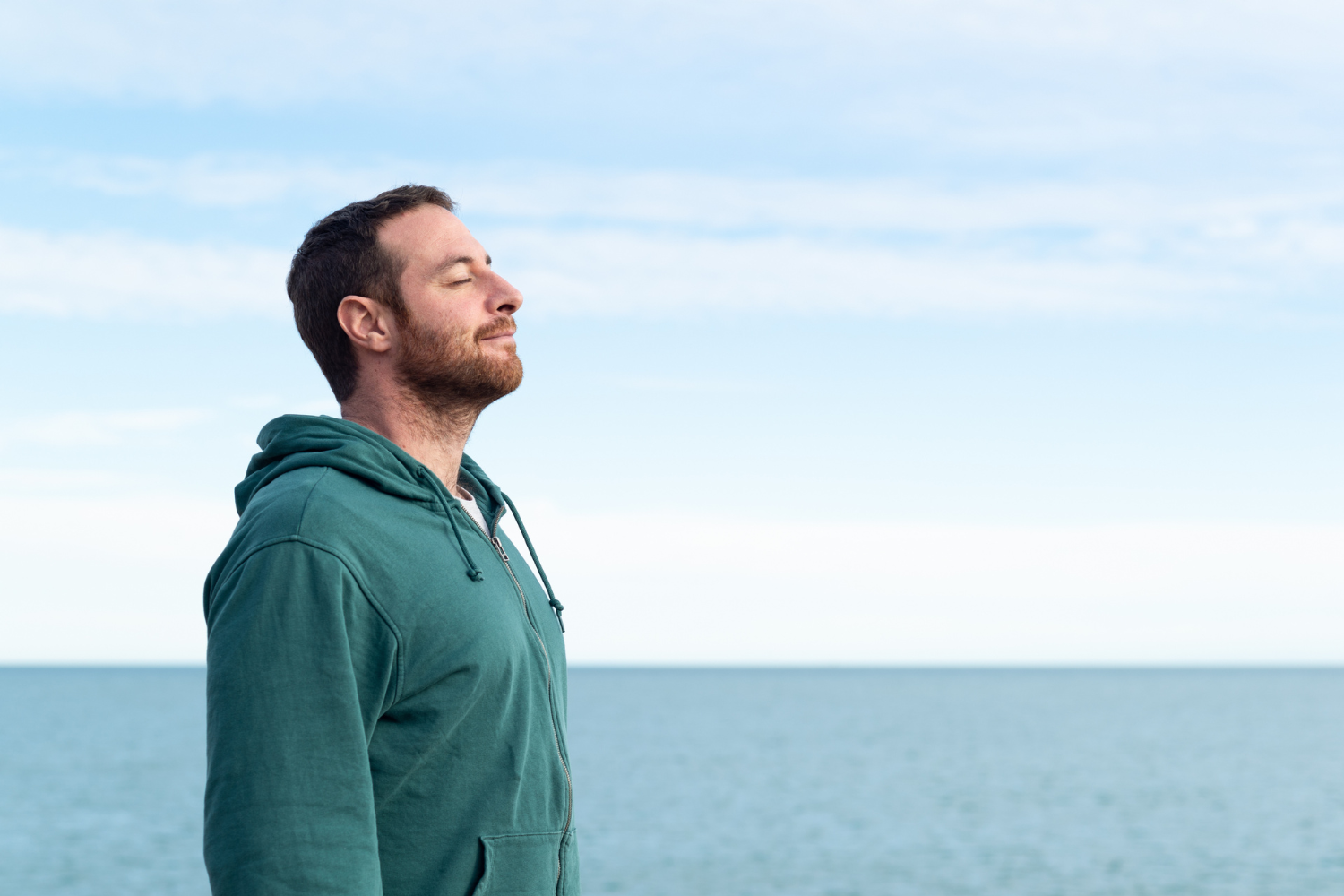 Cheryl Hammes, DO, FACOFP
Cheryl Hammes, DO, FACOFP
Associate Clinical Professor Family Medicine and Osteopathic Manipulative Medicine Ohio University Heritage College of Osteopathic Medicine–Cleveland, OH; President, Integrative Wellness, LLC
This paper was submitted as part of Dr. Hammes's application for ACOFP Fellowship, which recognizes exceptional national, state, and local service through teaching, authorship, research, or professional leadership. Visit the ACOFP Fellows page to learn more about fellowship and the nomination process.
PREAMBLE
How do you feel when you review a new patient’s past medical history, and you see interstitial cystitis (IC)? Sometimes it is difficult to admit we do not have all the answers to ease a patient’s pain and suffering. Those of you who have helped patients navigate the many facets of IC diagnosis and management know the journey can be frustrating, psychologically devastating, and costly for those that suffer with this disorder. Treatment success varies greatly and patients are willing to try a variety of ways to ease their discomfort, including: elimination diets, bladder infusions, pelvic floor physical therapy, biofeedback, botox injections and more. A New Mexico IC focus group study concluded that patient-centered care aimed at providing a variety of IC treatment options, screening for depression, as well as listening and validating patient concerns, provides hope to those suffering with this chronic illness.1 As an osteopathic physician we have a broad scope of approaches to help our patients heal. I considered the five models of the osteopathic patient-centered approach, and I utilized the biomechanical, biopsychosocial and neurological models when planning treatment for this patient.2
INTRODUCTION
Interstitial Cystitis (IC) is a condition that causes chronic bladder pain that may include symptoms of urinary urgency, dysuria, pain in the suprapubic and low back region.3 The prevalence of IC is 2.5 – 6.5 % of adult women in America4, and the ichelp.org website reports that between 3-8 million women and between 1-4 million men in the United State suffer with this chronic bladder pain syndrome.5 As a provider we often need to rule out other contributing factors for pelvic pain including assessments for pelvic floor hypertonicity, overactive bladder, colorectal diseases, endometriosis, and autoimmune disorders before considering the diagnosis of IC.4 A study of stress related illnesses reported that there is an increased risk of developing IC if your patient has peptic ulcer disease, depression, irritable bowel syndrome, sleep disorders, and allergic rhinitis diagnosed in the last 3 months.5 Many women with IC have concomitant diagnoses of fibromyalgia syndrome, irritable bowel syndrome, allergies and autoimmune disease.6 Trauma informed care is important as those who have experienced sexual abuse and or trauma are more likely to develop IC compared to controls.7 A recent study on Adverse Childhood Experiences (ACE) and symptoms of urologic chronic pelvic pain confirmed that ACE severity was elevated in those with urologic chronic pain syndrome compared with healthy controls.8 As osteopathic family physicians we are adept at empathetic patient-centered care that includes the diagnostic features needed to encompass the myriad of concomitant diagnoses, trauma histories, social stressors and biomechanical findings patients with IC often have.
CHIEF COMPLAINT: Abdominal and vulvar pain for 8 years, insomnia secondary to pain. HISTORY OF CHIEF COMPLAINT: A 50-year old woman presents to the clinic with complaints of chronic lower abdominal and vulvar pain for 8 years. The pain is deep and achy, periodically sharp and burning when she feels her bladder needs to be emptied. She has gained some pain relief after management from Cleveland Clinic’s pain management center with Ultram 50 mg two tablets three times a day for the duration of two years. Despite treatment with Valium, she awakens every two hours at night to empty her bladder. Acupuncture and chiropractic treatments were trialed with no relief of pain or symptom improvement.
PAST MEDICAL HISTORY: The past medical history includes Sjögrens syndrome, interstitial cystitis, vulvadynia and hypothyroidism diagnosed at age 42 years.
PAST SURGICAL HISTORY: Cystoscopy twice in 1997.
ALLERGIES: Sulfa drugs, Effexor XR.
MEDICATIONS: Ultram 50 mg TID, Valium 2 mg QHS, and Synthroid 75 mcg QAM. SOCIAL HISTORY: She works 20 hours a week in phlebotomy. She is a widow of 10 years and a single parent. After the death of her second born child to Sudden Infant Death Syndrome (SIDS), her third child was born at age 36. She lives with her high school age daughter and they exercise by tap dancing together.
TRUMA HISTORY: Patient denies previous fractures, pelvic injuries, motor vehicle accidents, sexual and emotional trauma. Patient admits the death of her second child to SIDS and the death of her husband caused situational depression at the time.
HABITS: No alcohol or caffeine consumption. No tobacco use in lifetime. REPRODUCTIVE: G4P3102. Menses are monthly. No sexual activity since the death of her husband.
REVIEW OF SYSTEMS: Pertinent review includes an eight-year history of insomnia and fatigue, secondary to pain. Bladder spasms and dysuria are present constantly. Lower pelvic pain and vulvar pain makes it difficult for her to sit for long periods of time. Seasonal runny nose is noted.
PHYSICAL EXAMINATION: Vitals BP=140/90 P=80, regular; Tº=98.3º.
HEENT: Nasal cavity is pale with turbinate edema bilaterally.
HEART: Rate and rhythm are regular without murmur.
LUNGS: Bilaterally clear to auscultation.
ABDOMEN: Bowel sounds present all four quadrants. Mild guarding with palpation of mid- line lower abdomen. No hepatospleenomegly.
ENDOCRINE: No thyromegly or nodules palpated.
PSYCHOLOGICAL EXAM: Generally, the patient is talkative, yet tears easily when discussing her physical pain and past deaths in her family. She is attentive, engaged in our conversation and recovers quickly from her slight tearful episodes. She is comfortable with all aspects of the exam after her consent was given for pelvic musculoskeletal palpation and OMM treatment.
NEUROLOGIC EXAM: Cranial nerves II-XII grossly intact, no sensory or motor loss noted. Upper and lower extremity DTR’s ¼, are bilaterally equal and symmetric.
OSTEOPATHIC SCREENING EXAM: shows flattened lumbar lordosis and thoracic kyphosis.
OSTEOPATHIC STRUCTURAL EXAM: reveals right first rib inhalation dysfunction with corresponding myofascial tenderness. The lumbar region has diminished lordosis and the paraspinal muscles present as tight and somewhat boggy. Pelvic diaphragm muscles are hypertonic and sore to direct cephalad pressure bilaterally. The following somatic dysfunction is noted: L2-5(N)SLRR. The right innominate is anteriorly rotated with anterior tender points present for iliacus and psoas on the ipsilateral side.
CLINICAL IMPRESSION
- Interstitial cystitis
- Hashimoto’s thyroiditis
- Sjögrens syndrome
- Insomnia
- Somatic Dysfunction in the regions of pelvis, lumbar, and ribcage
TREATMENT
The patient was treated with osteopathic manipulative medicine (OMM) at that time including a direct myofascial release (DMFR) of the pelvic diaphragm with respiratory cooperation.9 Muscle energy technique (MET) was utilized to balance the anterior innominate.10 The lumbar spine, right first rib and iliacus were addressed using supine Still technique. The right psoas strain counter strain tender point was treated using left lateral recumbent Still technique for psoas hypertonicity.11 Soft tissue petrissage was utilized for the tense paraspinal muscles.
COURSE OF TREATMENT
At her two-week follow-up visit, she had decreased her pain medication dosage from two Ultram 50 mg TID to two ½ tablets a day. All the lower vulvar and pelvic floor pain had been resolved. The urgency to urinate every two hours persisted. She followed up with the Cleveland Clinic’s pain management center and is currently working with them to completely wean off the Ultram, by beginning Elavil.
At the end of the first visit additional serum labs were ordered revealing TSH=3.91 and thyroid peroxidase antibodies=23.4 (high) confirming the diagnosis of Hashimoto’s thyroiditis. Her dose of Synthroid was increased to 88 mcg each morning. Since patients with IC often have autoimmune diseases like this patient’s Hashimoto’s thyroiditis, close monitoring of her TSH was employed for optimal treatment response.
DISCUSSION
Vulvodynia and interstitial cystitis (IC) are not well understood by most medical professionals. At the first visit, my initial biopsychosocial osteopathic impression was that the loss of her child to SIDS and her husband’s death may have triggered her pain psychosocially, yet the time frame of pain initiation did not correlate. Approaching the patient biomechanically, her somatic dysfunction of psoas spasm would contribute to urogenital disease as noted in Kuchera.12 Considering the osteopathic neurologic model, boggy and spastic lumbar paraspinal muscles may contribute to the facilitation of the lumbar splanchnic nerves (L1 and L2) causing the increased sensation of the need to urinate. As noted in” Foundations for Osteopathic Medicine”, her postural dysfunction including flattened lumbar lordosis and thoracic kyphosis may play a large role in the maintenance of her chronic pelvic pain and dysfunction.13
The superficial pain that limited the amount of time she was able to sit was greatly reduced after her pelvic floor dysfunction was addressed utilizing pelvic diaphragm DMFR to correct her hypertonic pelvic muscles dysfunction. This OMM treatment enabled her to greatly decrease her use of pain medications. Cleveland Clinic’s pain management center added Elavil to her medication regimen which follows the recommendation that tricyclic antidepressants have a good response rate for decreasing pain in patients with IC.14
CONCLUSION
A thorough literature search revealed no specific case reports, research articles or reviews regarding the use of OMM for treatment of IC. In 2013, Dr. Hollis King wrote a brief statement in the JAOA Somatic Connection citing myofascial physical therapy provides clinically significant relief for IC.15-19 Anecdotal reports of IC pain relief using Counterstrain treatment of suprapubic strain counterstrain points was noted in DeGiovanna’s textbook “An Osteopathic Approach to Diagnosis and Treatment.”19 Recent osteopathic textbooks discuss treatments related to the pelvis, autonomic nervous system and trigger point associations, but no reference materials in their chapters cite specific data in regards to OMM and IC symptom relief.2,19,20 Due to the large number of patients that suffer with this chronic illness, our osteopathic profession should develop relevant research to explore our unique capacity to serve this population with our biomechanical, biopsychosocial and neurological models of patient care. My patient experienced great relief after her somatic dysfunction was addressed with OMM and I strongly feel a large number of patients would benefit from similar treatments.
REFERENCES
- Kanter, G, Volpe, K, Dunivan, G. The important role of physicians in addressing the psychological aspects of Interstitial Cystitis/Bladder Pain Syndrome (IC/BPS): A qualitative analysis. Int Urogynecol J. February; 28(2): 249-256
- Seffinger, M et al. Foundations of Osteopathic Medicine, 4th ed. Chapter 23 The Five Models of Osteopathic Patient Care, pp 494-509. 2018.
- Homma, Y.; Ueda, T.; Tomoe, H.; Lin, A.T.; Kuo, H.C.; Lee, M.H.; Oh, S.J.; Kim, J.C.; Lee, K.S. Clinical guidelines for interstitial cystitis and hypersensitive bladder updated in 2015. Int. J. Urol. 2016, 23, 542–549. [CrossRef] [PubMed]
- Berry, S.H.; Elliott, M.N.; Suttorp, M.; Bogart, L.M.; Stoto, M.A.; Eggers, P.; Nyberg, L.; Clemens, J.Q. Prevalence of symptoms of bladder pain syndrome/interstitial cystitis among adult females in the United States. J. Urol. 2011, 186, 540–544. [CrossRef]
- https://www.ichelp.org/about-ic/what-is-interstitial-cystitis/4-to-12-million-may-have-ic/
- Yang, M et al Association of Interstitial Cystitis/Bladder Pain Syndrome with Stress- Related Diseases: A Nationwide Population-Based Study J Clin Med. 2021 Dec; 10(23): 5669.
- Mayson, B, Teichman, J The relationship between sexual abuse and interstitial cystitis/painful bladder syndrome. Curr Urol Rep. 2009 Nov;10(6) 441-7.
- Schrepf, A, Naliboff, B, Williams, D et al. Adverse Childhood Experiences and Symptoms of Urologic Chronic Pelvic Pain Syndrome: A Multidisciplinary Approach to the Study of Chronic Pelvic Pain Research Network Study Ann Behav Med(2018) 52:865-877
- DeStafano, L. Greenman’s Principles of Manual Medicine, 5th ed. Chapter 7, Section 7.30.
- Nicholas S., Nicholas A. Atlas of Osteopathic Techniques, 4th ed. Chapter 10 Muscle Energy Techniques, fig 10.152
- Van Buskirk, R. The Still Technique Manual, 2nd ed. Still Technique: 1st rib, iliacus, Lumbar supine
- Kuchera, ML and Kuchera, WA, Osteopathic Consideration in systemic Dysfunction, second edition, Columbus, Ohio: Greyden Press: 1994: 132.
- Tettambel, M.: “Gynecology”. In Ward, RC exec. Ed. Foundations for Osteopathic Medicine. Second edition, Baltimore, MD; Williams and Wilkins Co.: 2003; 417.
- MacNeil, JS. Vulvadynia guideline offers Many Tx Options. Family Practice News. Vol.35, No. 7. 52. 2005.
- Weiss JM. Pelvic floor myofascial trigger points: manual therapy for interstitial cystitis and the urgency-frequency syndrome. J Urol. 2001;166(6):2226-2231.
- Oyama IA, Rejba A, Lukban JC, et al. Modified Thiele massage as therapeutic intervention for female patients with interstitial cystitis and high-tone pelvic floor dysfunction. Urology. 2004;64(5):862-865.
- FitzGerald MP, Anderson RU, Potts J, et al; Urological Pain Collaborative Research Network. Randomized multicenter feasibility trial of myofascial physical therapy for the treatment of urological chronic pelvic pain syndromes. J Urol. 2009;182(2):570-580.
- King, H (2013) The Somatic Connection: Manual Therapy May Benefit Women with Interstitial Cystitis and Pelvic Floor Pain. Journal Osteopath Med;113(4)360-361
- DiGiovanna, E., Amen, C., Burns, D. An Osteopathic Approach to Diagnosis and Treatment, 4e. Chap. 116. Obstetric and Gynecologic Considerations. 2021.
- Nelson, K, Glonek,t Somatic Dysfunction in Osteopathic Family Medicine, 2e. Chapter 29: The Patient with Urologic Concerns. 2015.





